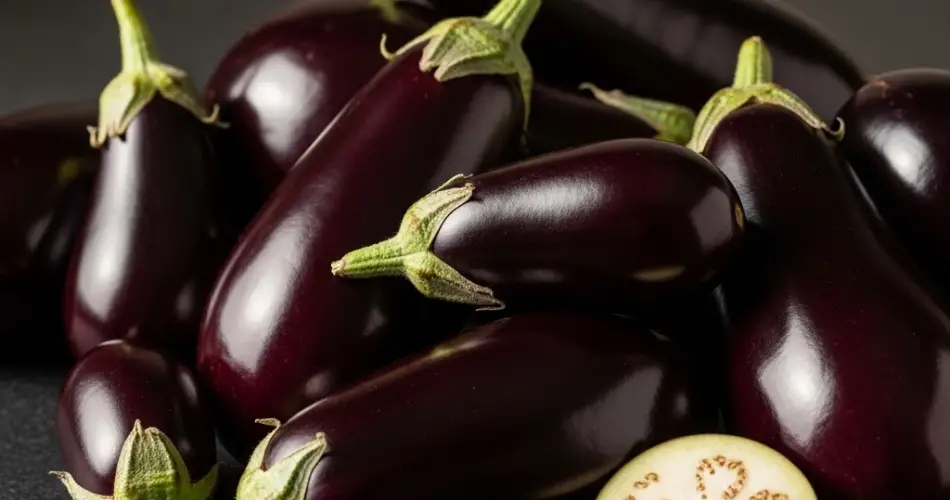If you’ve ever dreamed of harvesting plump, shiny, deep-purple fruits like eggplants or certain varieties of tomatoes, you’re not alone. These striking vegetables are not only visually appealing but also packed with nutrients and antioxidants. But growing them to their full potential—deep in color, firm in texture, and rich in flavor—requires a few essential techniques. Here’s everything you need to know to grow glossy, vibrant purple fruits right in your own garden.
1. Start With the Right Variety
First and foremost, choose high-quality seeds or seedlings of varieties known for their deep purple color. For example, ‘Black Beauty’ and ‘Purple Blaze’ are popular eggplant varieties that develop a rich purple hue when grown under the right conditions. If you’re growing tomatoes, look for cultivars like ‘Indigo Rose’ or ‘Black Krim,’ which are specifically bred for their dark skin tones.
Check the seed packet for recommended climate, soil type, and days to maturity. Starting with a reputable seed source ensures strong genetics, which plays a big role in the final color and quality of your harvest.
2. Ensure Plenty of Sunlight
Purple pigments in fruits, such as anthocyanins, are enhanced by sunlight. Make sure your plants receive at least 6 to 8 hours of full sun daily. Without enough light, the fruits may remain pale or streaked, and growth may be stunted.
If you’re gardening in containers or in a location with limited sun, consider moving the pots around throughout the day to maximize light exposure. South-facing locations are ideal for producing bold color and high yields.
3. Feed With the Right Nutrients
Deep-colored fruits thrive with the right balance of nutrients. Nitrogen is important during early growth stages, but too much of it later in the season can cause leafy growth at the expense of fruit development. Shift to a fertilizer rich in phosphorus and potassium once the plants start to flower and set fruit.
An organic feeding schedule using compost tea, fish emulsion, banana peel fertilizer, or wood ash can provide a steady supply of nutrients that enhance fruit development and coloration. Potassium, in particular, is essential for encouraging that rich purple hue and firm texture.
4. Maintain Consistent Watering
Consistent moisture is crucial for producing plump and flavorful fruits. Uneven watering can lead to cracking, bitterness, or blossom-end rot. Water deeply at the base of the plant rather than overhead to avoid promoting disease. Mulching around the base helps retain moisture and regulate soil temperature.
During hot weather, plants may need watering every day, especially if they are growing in containers. Be careful not to overwater, which can lead to root rot and reduced fruit quality.
5. Prune and Support Plants
Proper pruning and staking can make a noticeable difference in the quality of your purple fruits. Remove excess side shoots and yellowing leaves to improve air circulation and sunlight penetration. This helps the plant direct more energy into fruit production rather than unnecessary foliage.
Use sturdy stakes or cages to support the plant as the fruits mature. This prevents damage from wind or the weight of heavy fruits and keeps the produce off the ground, reducing the risk of pests and rot.
6. Protect Against Pests Naturally
Pests like aphids, flea beetles, and spider mites can stress the plant and negatively affect fruit color and size. Use organic pest control methods such as neem oil spray, insecticidal soap, or a garlic-chili spray to deter harmful insects. Companion planting with basil, marigolds, or nasturtiums can also help keep pests away naturally.
Check your plants regularly for early signs of infestation and act quickly to avoid significant damage. Healthy plants are much more likely to produce vibrant, flavorful fruits.
7. Harvest at the Right Time
Picking your fruits at the correct time ensures the best flavor and deepest color. For eggplants, look for fruits that are glossy and firm but not hard. Overripe eggplants become dull, spongy, and bitter. For tomatoes, wait until the skin turns a consistent dark purple or nearly black, and the fruit has a slight give when gently squeezed.
Don’t leave fruits on the plant too long—this can hinder further production and attract pests. Regular harvesting encourages continuous fruiting and better plant health.
In Conclusion
With the right variety, ample sunlight, proper feeding, and consistent care, you can grow stunning deep-purple fruits that are as delicious as they are beautiful. These tips will help you transform your garden into a productive space filled with rich color and high-quality harvests. Whether you’re growing in raised beds or containers, a little attention to detail makes all the difference. Happy gardening!



